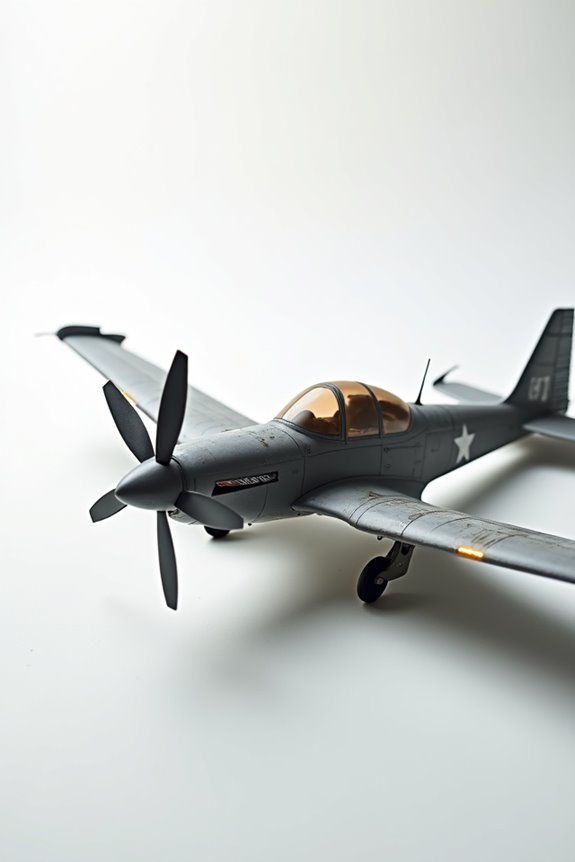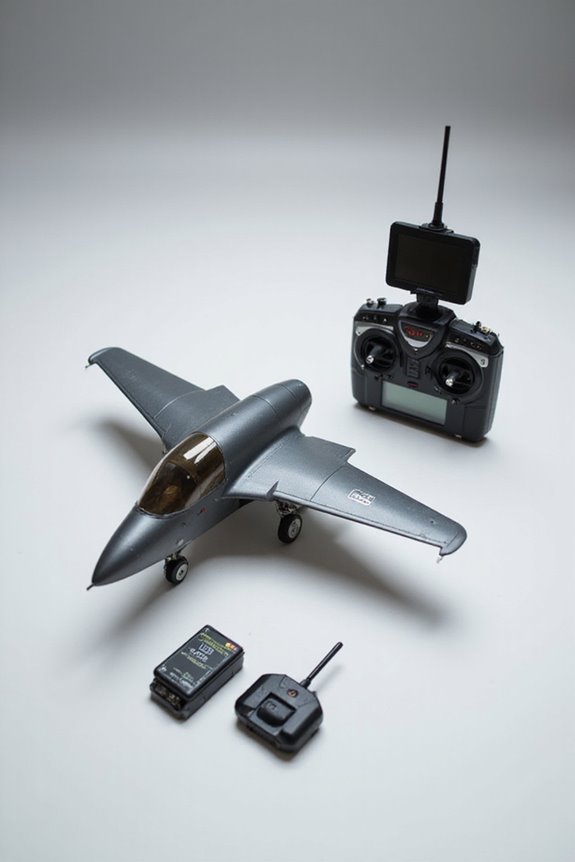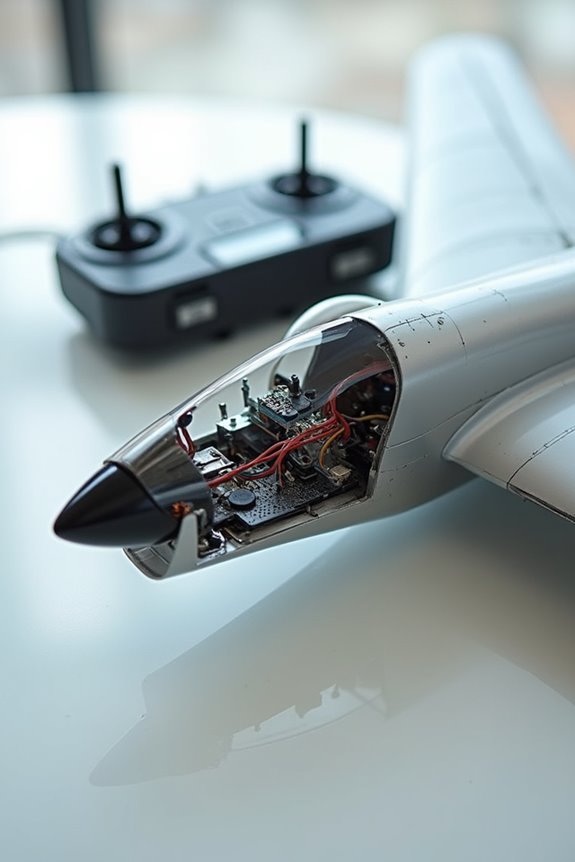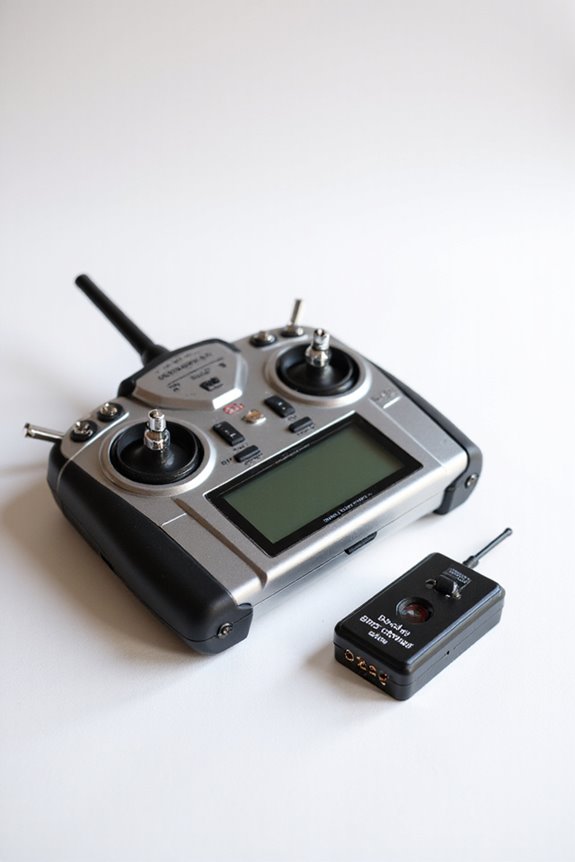Electric power is transforming RC flying into a greener and more enjoyable hobby. With hybrid systems boosting efficiency, we’ll see reduced fuel consumption and emissions. Plus, quieter operations mean less noise pollution for our neighborhoods! The latest tech, like modular lithium-polymer batteries and smart speed controllers, enhances control and flight time. It’s all about customizing our aircraft for a personal touch. As we explore this change, we’re bound to discover even more exciting advancements ahead!
Key Takeaways
- Electric power enhances efficiency, offering reduced fuel consumption and emissions, making RC flying more environmentally friendly.
- Innovations like modular battery packs enable customization, catering to diverse flying needs and preferences.
- Quieter operation of electric models minimizes noise pollution, contributing to a more serene flying experience.
- Increased flight times through regenerative energy capture and advanced battery technology increase user satisfaction and enthusiasm.
- Ongoing advancements in technology improve accessibility and safety, enabling a broader audience to enjoy RC flying.
Performance Advancements in Electric Propulsion
When it comes to electric propulsion, we’re not just talking about flipping a switch; we’re seeing real advancements that are changing the game for RC flying! Hybrid systems are stepping up, offering electric efficiency that helps us fly smarter, not harder. These systems allow internal combustion engines to operate at their best, reducing fuel consumption and those pesky emissions.
The beauty of distributed propulsion is in its aerodynamic perks. We’ve got less drag and more lift, which means longer flights! Plus, the quiet operation is like music to our ears—goodbye, noisy engines! With regenerative energy capturing during descents, we’re extending our flight times, making these systems not just efficient but also a blast to fly. Who knew being eco-friendly could feel this good?
Technological Innovations Driving the Future
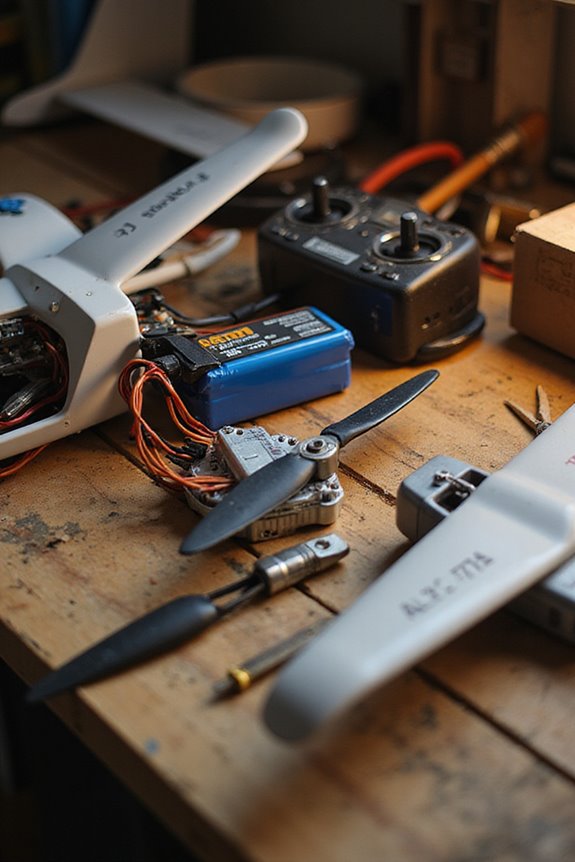
While we might think of RC flying as a hobby grounded in nostalgia, today’s technological innovations are truly launching us into the future! Take battery technology—modular lithium-polymer packs let us tailor power to our models. With the right batteries, we can scale up without worrying about added weight.
Smart management is another game changer. New Electronic Speed Controllers provide precise motor control and real-time telemetry. Imagine getting live updates on battery voltage while in the air—talk about flying with confidence!
Plus, lighter materials and advanced motors give us impressive thrust without the hassle of gas. With these innovations, we’re not just flying; we’re soaring into a new era of RC flying! Let’s get excited about what’s next! Additionally, the weight considerations of motors play a crucial role in ensuring optimal flight performance and stability.
Environmental Benefits of Electric RC Flying
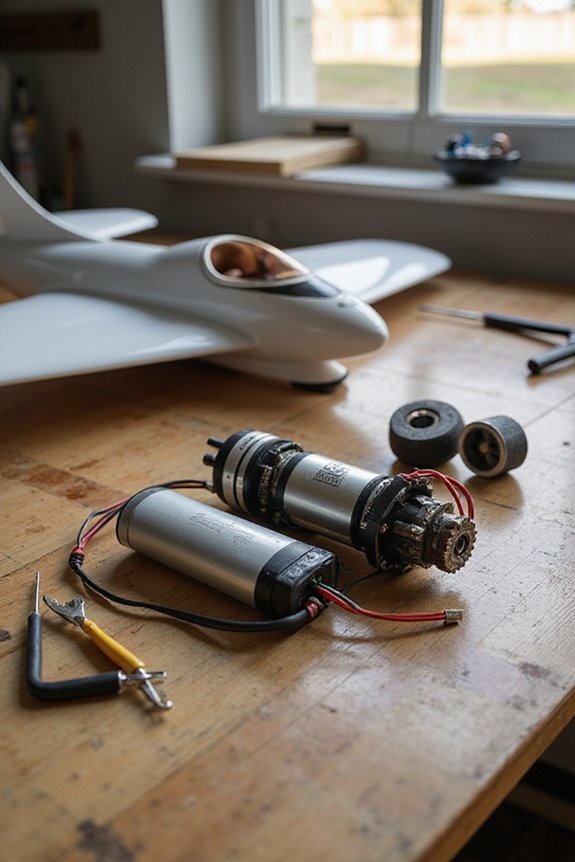
Electric RC flying isn’t just a fun hobby; it’s an eco-friendly choice that benefits our planet! By choosing electric models, we can achieve up to 60% lower climate impact compared to traditional fossil fuel aircraft. Sure, making batteries takes energy, but after about 1,000 flight hours, we start enjoying real emission reduction benefits. Electric aircraft operate with zero direct emissions, making the air cleaner and the skies quieter—our neighbors will thank us!
Let’s not forget about sustainability initiatives; recycling materials can help us tackle rare metal scarcity. By flying electric, we actively contribute to greener skies while having a blast. It’s cool to know our flying adventures can be kinder to our planet, and we can be the environmentally conscious pilots! Additionally, the proper fuel selection for nitro engines can significantly affect their environmental impact, making electric options even more appealing.
Operational Flexibility and Ease of Use
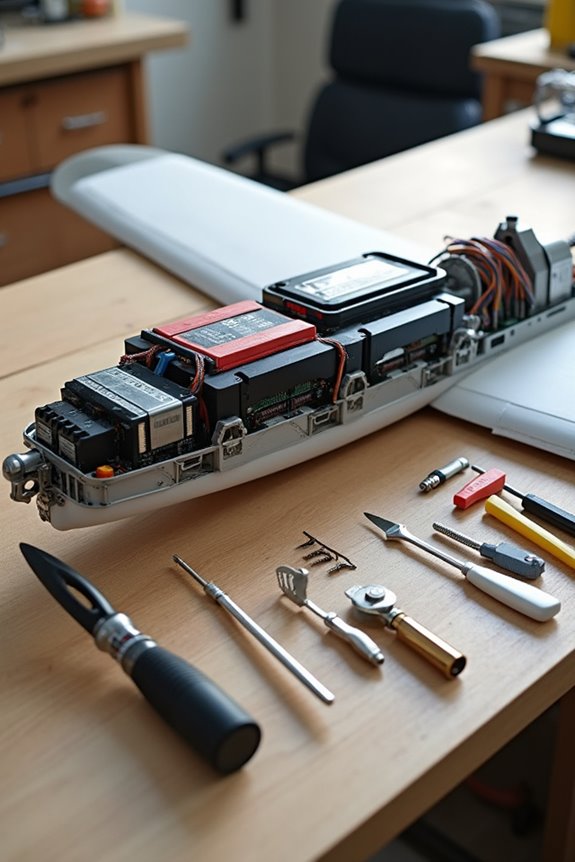
Flying isn’t just about the joy of soaring through the skies; it’s also about how easy and flexible our setups can be. With electric RC aircraft, customizing our models is a breeze. We can swap out transmitters, motors, and batteries to fit our flying styles—all while enjoying the smooth throttle adjustments from our ESCs.
Plus, safety features like automatic signal shutoff and soft start prevent any awkward surprises at takeoff. No one likes their plane doing the cha-cha during launch!
And let’s not forget the quick deployment of RTF or BNF models; we can spend less time tinkering and more time flying. So, whether we’re hitting the park or our backyard, it’s all about convenience and keeping it fun! Additionally, advancements in technology have led to longer flight times that enhance the overall flying experience.
Industry Trends and the Evolving Hobby Landscape
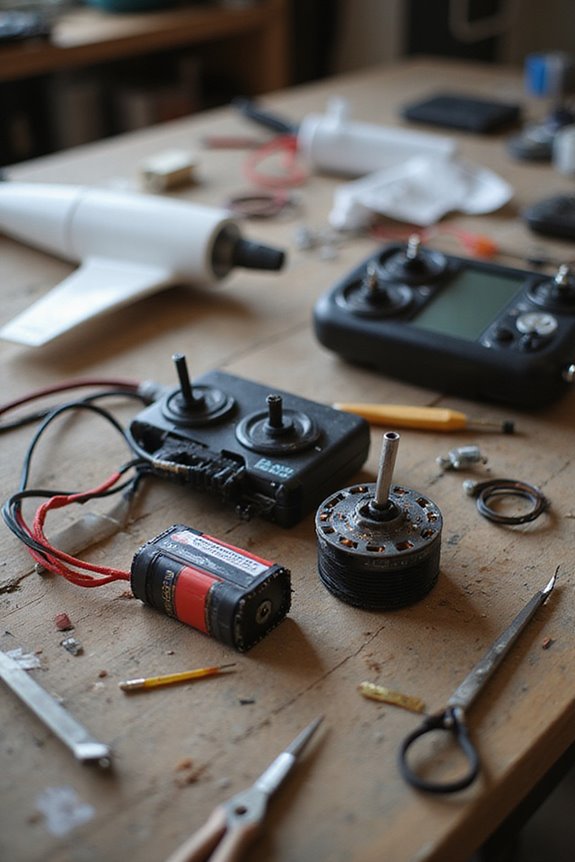
As the world whirls toward sustainability, we find ourselves at an exciting crossroads in the RC hobby landscape. Electric-powered aircraft are stealing the spotlight, thanks to their quieter operation, lower emissions, and reduced maintenance. It’s no wonder consumer preferences are shifting—who wouldn’t want more flight time and less fuss?
The market’s expanding, driven by rising disposable incomes and a thirst for customization. Features like AI-assisted stability and GPS navigation are making flying more accessible. We’re witnessing a new breed of enthusiasts, from casual fliers to tech-savvy photographers. As RC flying evolves, it’s not just about the fun; it’s about fostering skills and creativity. With advancements in battery life and charging, it’s easier than ever to enjoy extended flights without frequent interruptions. So, let’s embrace the electric revolution—because who wouldn’t want to fly into a greener future?
Frequently Asked Questions
What Are the Initial Costs of Switching to Electric RC Flying?
When we consider switching to electric RC flying, our initial investment might be around $750 for a conversion kit and batteries. However, we’ll enjoy long-term savings on maintenance and fuel, making it worthwhile.
How Often Should Electric Batteries Be Maintained or Replaced?
We should regularly assess our batteries’ lifespan and establish a maintenance frequency based on usage. For reliability, we replace them annually or sooner, especially if we notice significant capacity loss during our flights.
Can I Convert My Gas-Powered RC Plane to Electric?
As we transform our gas-powered planes into electric marvels, the conversion process reveals a symphony of possibilities. A benefits comparison shows smoother flights, less noise, and greater efficiency, inviting us to embrace this exhilarating change together.
What Safety Precautions Should I Take With Electric RC Planes?
When flying electric RC planes, we should prioritize battery storage and charging safety. Let’s make sure batteries are stored properly and charged according to guidelines, reducing risks and ensuring a safer flying experience for everyone involved.
Are There Specific Electric Motors for Different Types of RC Models?
Yes, there are specific electric motors for different RC models. We typically prefer brushless motors, especially outrunner designs, for their efficiency and torque, making them ideal for various aircraft from trainers to aggressive 3D aerobatics.

